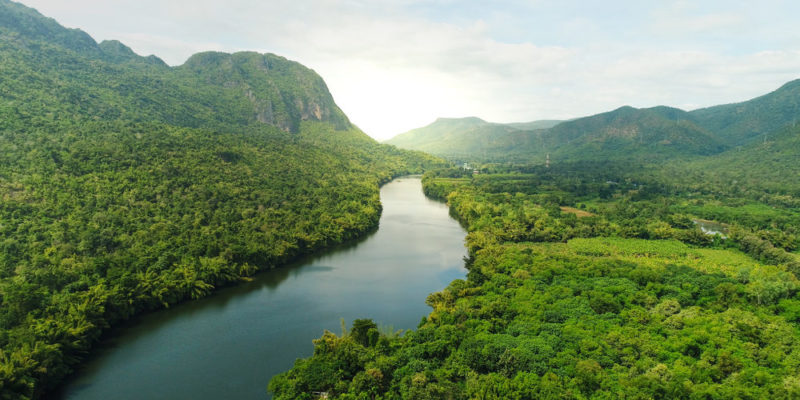We explain what the climate is and what its characteristics are. In addition, the factors that determine it, the microclimates and more.
What is the climate?
Climate is a set of atmospheric conditions that occur frequently in a certain place, such as temperature , pressure, winds, rainfall and humidity.
There are other factors specific to each region that affect the climate, such as the height, the distance of a place from the equator, the currents of the coastal areas, among others, which cause different types of climates depending on the place on the planet in that they are.
Climatology is a branch of geography that studies the climate over time in the different regions of the planet. It should not be confused with meteorology , which is a branch of atmospheric physics that studies the atmospheric phenomena that determine the temperature at a particular time.
Climate characteristics

The main characteristics of the climate are:
- Temperature. It is the variation in the intensity of heat that occurs in a certain place and can be measured with three types of scales that differ by taking different reference points: Celsius (ºC), Kelvin (K) or Fahrenheit (ºF).
- Atmospheric humidity It is the amount of water vapor in the air , which comes from the evaporation of the masses of water on the planet, such as seas , oceans or rivers. The amount of water vapor that the air can hold depends on the temperature.
- Atmospheric pressure. It is the weight that the air in the atmosphere exerts on the earth's crust. Its intensity depends on the altitude and temperature. To measure pressure, a barometer is used, which has a measurement scale in millibars and is measured at any point above sea level.
- Wind. It is the movement of a large mass of air that takes place in the atmosphere and is conditioned by the variation in atmospheric pressure and changes in temperature, which determine the intensity or speed of the movement of the wind.
- Precipitation. It is any particle of liquid or solid water that forms a large mass that is suspended in the atmosphere and then falls or precipitates on the earth's surface in the form of rain , drizzle, snow or hail. It should not be confused with mist or dew, which are forms of condensation (changes in the state of matter).
Types of weather

There are three main types of climates which, in turn, are characterized by various subclimates.
The warm climate is up to 1,000 meters above sea level and is characterized by an average temperature of 20 ° C, without presenting a significant variation in temperature between seasons. It is a type of climate conducive to the development of forests and meadows with abundant vegetation. The warm climate is subdivided into:
- Equatorial. It extends over the line of the equator , presents high temperatures throughout the year. Precipitation and humid air predominate.
- Tropical . It extends between the equator line north to the Tropic of Cancer line and south to the Tropic of Capricorn. The precipitations are abundant only in the summer time.
- Arid subtropical. It extends in the transition zones between the desert and the jungle, it presents thermal amplitude between day and night. It is characterized by rainfall that varies in intensity depending on the time of year.
- Mediterranean . Its characteristic is the presence of dry and sunny summers while winters are very rainy.
- Oceanic . It is the climate that occurs in coastal areas, clouds and rains abound, and the climate between seasons does not present extreme variations.
- Continental. It is the climate in which the summer and winter seasons present wide differences in temperature and atmospheric conditions.
The third type of climate is cold , which extends to regions that can be at sea level or up to 3,000 meters high, where temperatures do not exceed 10 ° C, as at the poles. Cold weather is subdivided into:
- Polar . It is characterized by having little vegetation due to cold weather conditions.
- High mountain. It is characterized by the variation in temperature (it gets colder and colder and the amount of oxygen decreases ) as the height increases.
Anas is an editor of a prestigious publishing company in the United States. She studied Mathematics in Arizona. Anas is also a teacher and one of her long-term goals is to build an institution that offers free education to everyone who are financially not stable. .
Leave a reply
Your email address will not be published. Required fields are marked *Recent post

Sport: What Is It, Types, Risks, Features, Characteristics and Examples

Dogs: Emergence, Features, Characteristics, Feeding and Breeds

Story: Definition, Elements, Structure, Features and Characteristics

